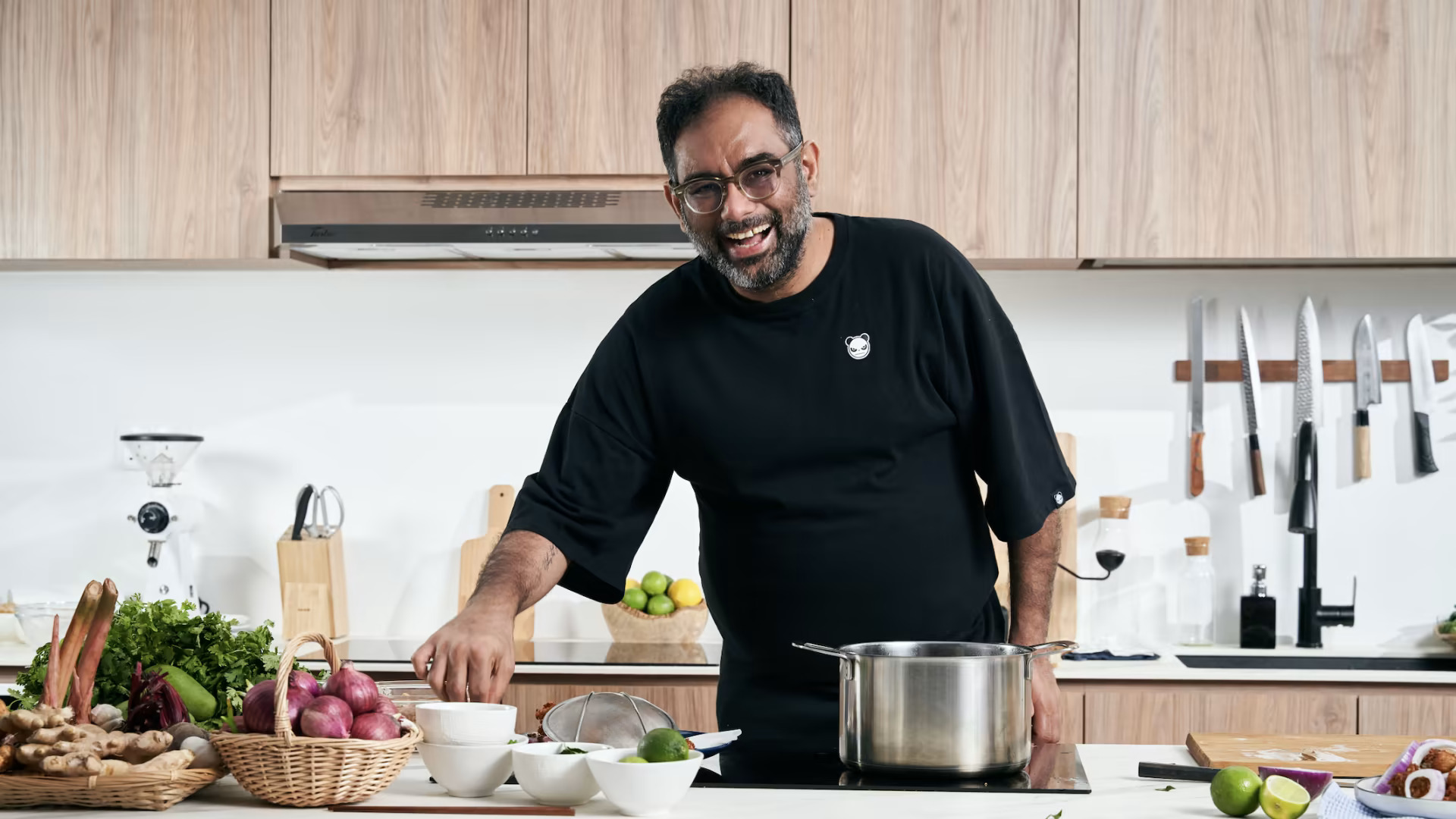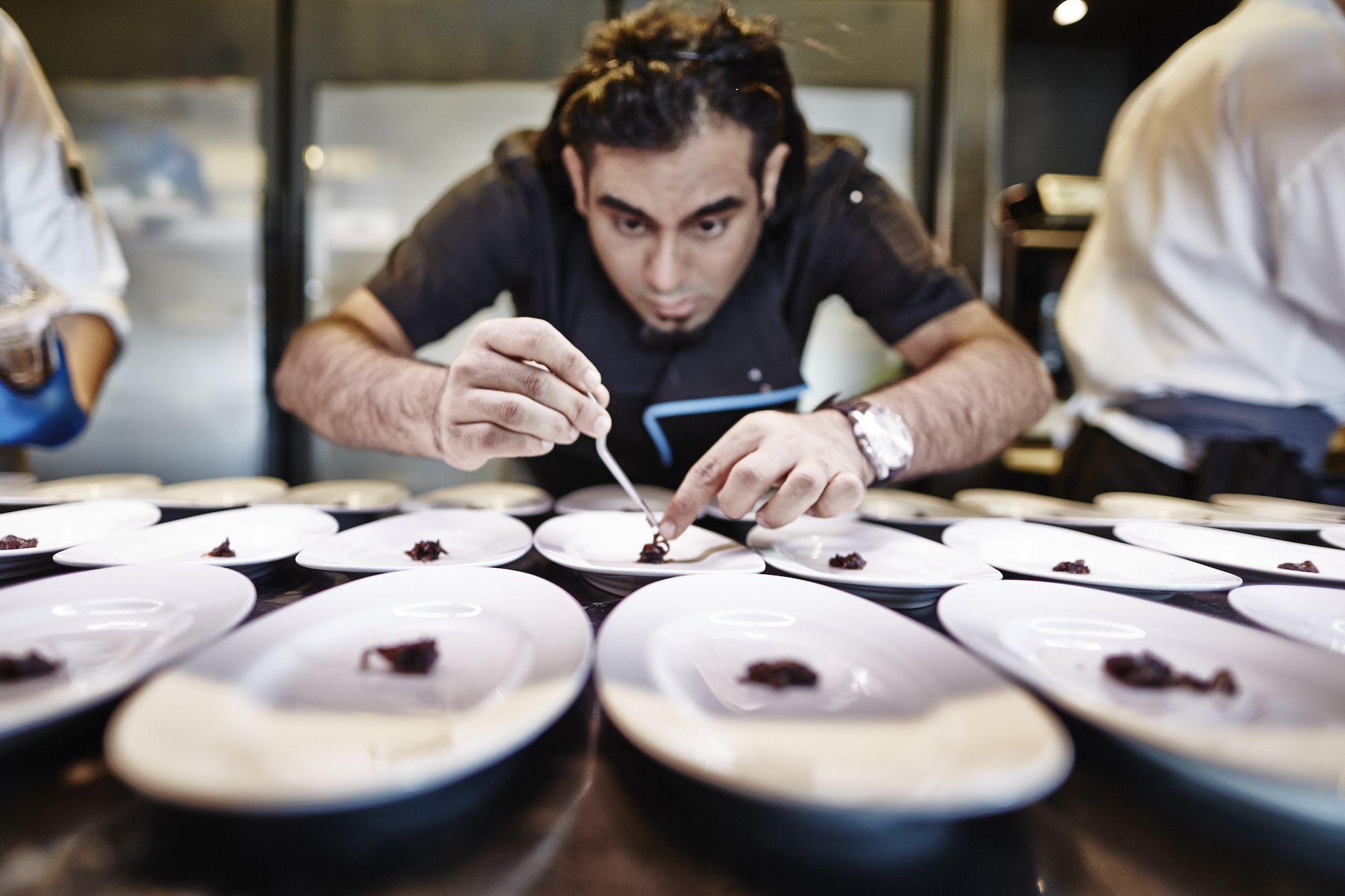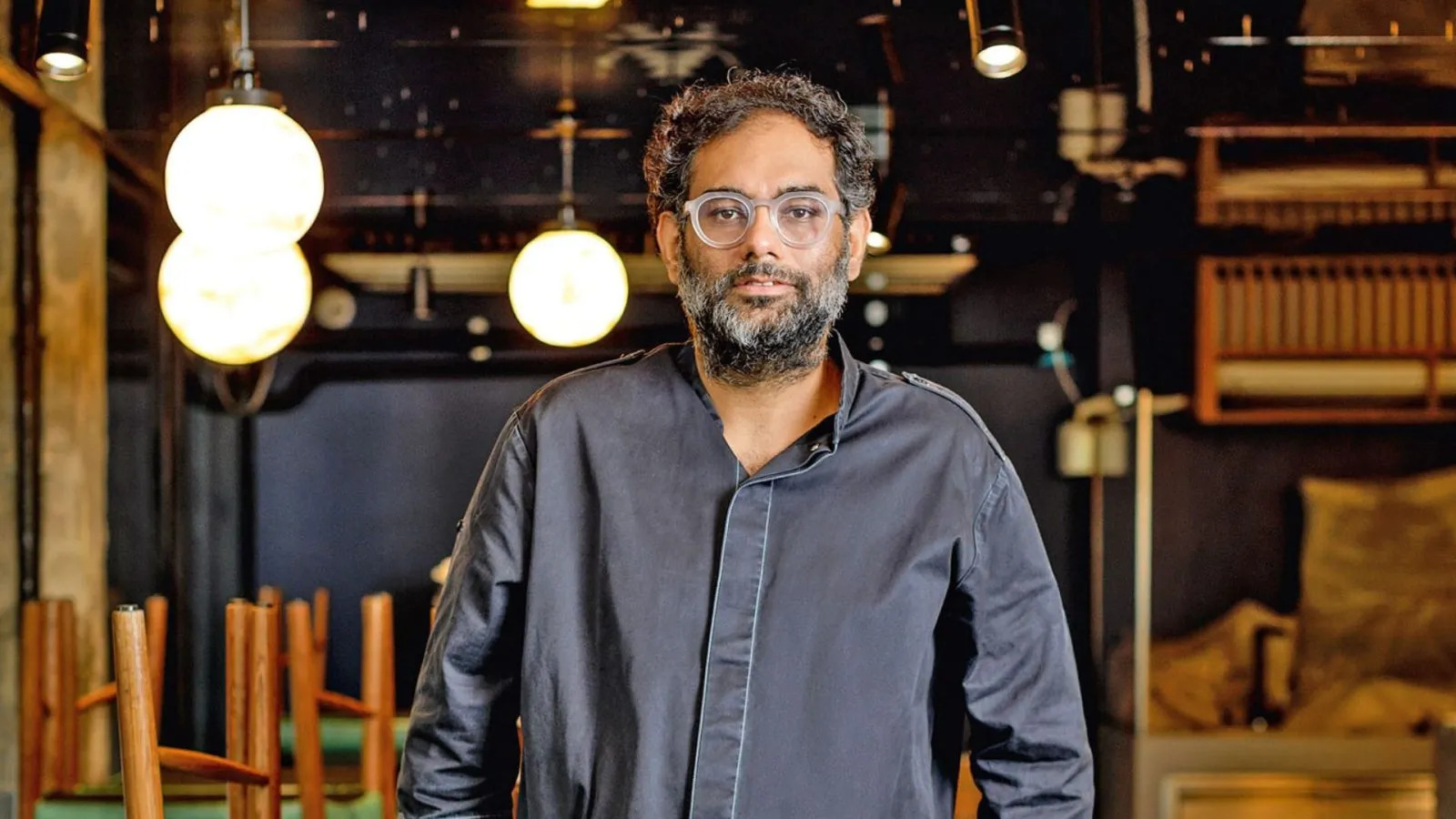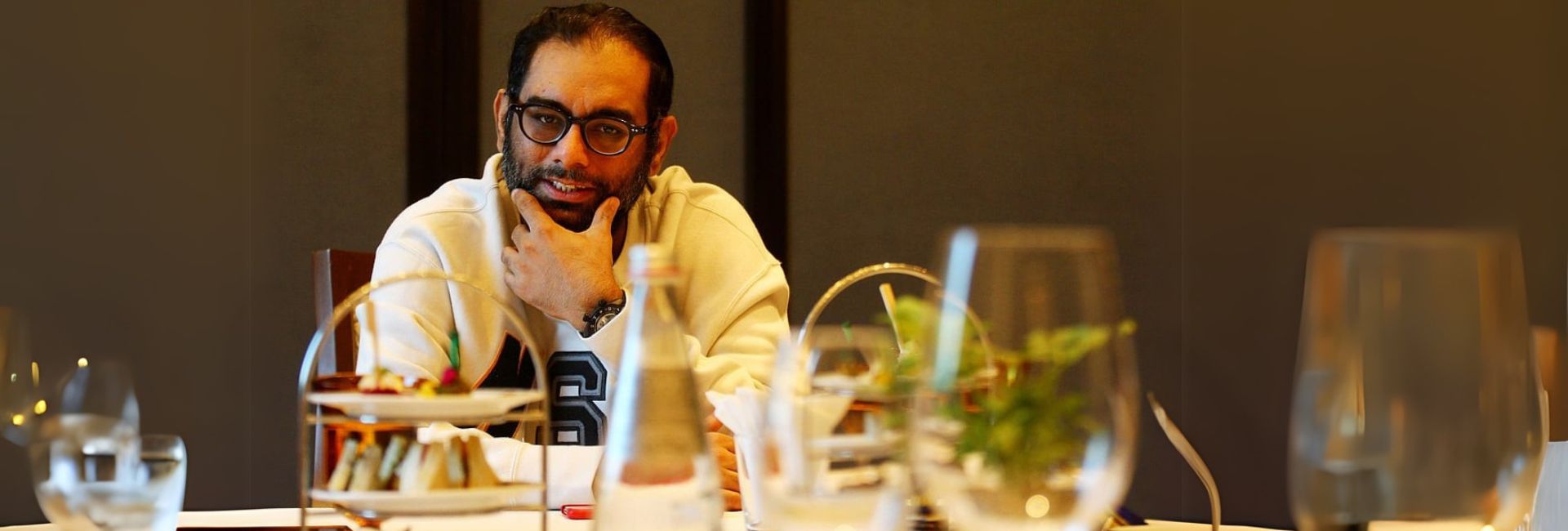(March 31, 2025) On a cool March evening in Seoul, Indian chef Gaggan Anand stepped on stage with moist eyes to accept the trophy for Asia’s 50 Best Restaurants 2025. At 47, the chef appeared both thoughtful and joyful as he received the award. “Yes, it’s unbelievable,” he said, his voice cracking, “but I had to make it back just to prove it wasn’t over”. It was the fifth time his Bangkok restaurant – simply named Gaggan – had earned the No.1 spot in Asia, a clear sign of his steady hard work and resilience after years of change and challenges.
View this post on Instagram
For the Michelin-star chef, this victory was about more than personal success. It signified how far Indian cuisine has come on the global stage and how one chef’s creativity can change the way people see his country’s food. At his restaurant, guests don’t just have dinner – they join in a playful, immersive journey. The tasting menu replaces words with emoji icons and even invites diners to sometimes eat with their hands. With rock music playing in the background and chefs chatting with the crowd, Anand often works the room like a rockstar, turning fine dining into a lively “food opera” without ever forgetting the importance of taste. “When I was young, I never imagined that Asia could be a gastronomic hub… look where we are,” he added.
Fusing Bold Indian Spices with Thai Traditions
His journey is closely linked to the spread of Indian cuisine in Asia, especially in Thailand. Years ago, Indian food made its way across the region through trade and cultural exchange, carrying bold spices and unique flavors. In Thailand, these flavors mixed with local ingredients and cooking styles to create a blend that honored both traditions. When Gaggan moved to Bangkok, he wasn’t just opening a restaurant; he was joining a broader trend that was changing the local food scene. He put a fresh twist on well-known Indian dishes, making them appealing to both local diners and international food lovers.

Gaggan Anand cooking up a storm in the kitchen
From Kolkata Roots to Culinary Mastery: A Punjabi Chef’s Journey
Decades earlier, as a Punjabi boy growing up in Kolkata, Gaggan Anand’s future was uncertain. Born into modest means, he grew up facing the daily challenge of not always knowing if there would be enough food. His journey into the culinary world took a firm shape when he enrolled at IHMCT, Kovalam in 1997 — a moment that opened a door to a future far beyond poverty. Soon after, he joined the Taj Group as a trainee, where he learned discipline and technique. Seeking to expand his skills further, Anand pursued a catering career in Kolkata’s Tollygunge area. It was here that he absorbed the art of balancing spices and understanding deep-rooted flavours — a foundation that would later define his bold reinventions of Indian cuisine.
But Kolkata was just the beginning. Anand’s hunger for innovation soon took him beyond his hometown. He relocated to Bangkok in 2007 to work at Red, a contemporary Indian restaurant, where he discovered a new world of ingredients and a creative freedom that traditional kitchens back home could not offer. “I came here, saw raspberries and strawberries fresh in the market. Foie gras in the market. Caviar in the market. It’s like, ‘Wow, these we don’t get even in the best restaurants in India.’… The world of dreams just opened up. And I thought, ‘This is it.’ And I left India forever,” he later recalled.

Innovating Abroad: How a Move to Bangkok Sparked a Global Culinary Revolution
A turning point in his career came when a food critic encouraged him to study the work of Ferran Adrià, the legendary Spanish chef behind El Bulli. Intrigued by the idea of pushing the limits of cooking, Anand set off for Spain, where he became the first Indian chef to work in Adrià’s famous research kitchen. He started experimenting in his own kitchen, rethinking how Indian dishes could be made and presented. He mastered techniques like turning an olive into an edible sphere — a skill he later adapted into his signature “yogurt explosion” dish, a small burst of spiced yogurt that surprises the palate.
Crafting a New Era: How Gaggan Opened Its Doors in Bangkok
Armed with new skills and an unshakeable determination, Anand returned to Bangkok to build his dream restaurant from scratch. In 2010, he opened Gaggan on a quiet street in Sukhumvit, Bangkok’s bustling dining district. Initially, the idea was to launch a curry house with tapas-style food, but as he experimented and evolved, so did the concept. Rejecting the conventional boundaries of Indian cuisine, his menu soon became a canvas where traditional flavours were reimagined into playful, futuristic creations.
In Anand’s kitchen, the old rules no longer applied. A simple street snack like dhokla was turned into a light, truffle-infused foam, and a basic cup of chai became a delicate chilled soup. One course might offer tangy chaat reimagined as a sorbet, while another presented oysters drizzled with truffle foam. Each dish was created to challenge what people expected from Indian food, mixing careful technique with a hint of showmanship. “I call it progressive cuisine,” he explained. “The first thing I learned at El Bulli was that there is no such thing as molecular gastronomy… What I’m doing is progressing the history of Indian food.” His culinary philosophy was simple: new ideas should always honour tradition, and every dish is a chance to rediscover the deep, rich flavours of India.
View this post on Instagram
From Setback to Comeback: The Resilient Revival of Gaggan Anand
By 2015, news of this bold chef had spread widely. Critics called Gaggan a breakthrough — a bold reinvention of Indian cuisine that was both playful and respectful of its roots. In just a few years, his restaurant earned the title of Best Restaurant in Asia for the first time, a moment that made waves in the culinary world.
But the journey wasn’t always easy. At the height of his success, disagreements with business partners led to a split that nearly derailed his career. In mid-2019, Anand surprised everyone by announcing he would close Gaggan while it was still at the top. “I hate to be predictable, so I need to take this break,” he said during that challenging time. However, the split didn’t last long. With his loyal team by his side, he reopened a new venture called “Gaggan Anand,” just a mile away from the original location.
A Fresh Start at the Chef’s Counter: Gaggan Anand’s Reopening
The reopening marked a fresh start. In a small, intimate space that seated only 14 guests around a chef’s counter, every service felt like a special performance. Neon lights, a rock soundtrack, and an energy that filled the room turned each dinner into an engaging event. Guests listened intently as Anand himself explained the inspiration behind each dish—stories that began in the crowded lanes of Kolkata and extended to the innovative kitchens of Bangkok. “Most chefs in their late 40s will think about retiring. I went in the opposite direction,” he remarked, emphasising that the split had only pushed him to work even harder.
View this post on Instagram
Then came the challenge of the COVID-19 pandemic. When Thailand went into lockdown in early 2020, the new restaurant was forced to close its doors, and Anand faced a period of doubt and personal hardships, including a painful divorce and a custody battle. “Initially I… believed that my era was over. I wasn’t trendy any longer,” he later admitted. But even during those dark times, his determination did not waver. As borders reopened and the world slowly recovered, Anand took his show on the road—collaborating with chefs in Miami, London, and Tokyo, and even partnering with luxury brand Louis Vuitton for a unique dining experience in Bangkok.
Rising Again: How Gaggan’s Reinvention Made Indian Cuisine Shine on the Global Stage
By 2021, his reinvented restaurant had made its way back onto Asia’s 50 Best list, debuting at No.5 and earning the Highest New Entry award. His hard work and fresh ideas soon paid off, and by 2025, his restaurant had once again claimed the top spot in Asia. Standing on the Seoul stage that night, amid applause and flashing cameras, Anand allowed himself a rare moment of vulnerability. “Coming back after 10 years, I didn’t expect it… but to come back gives me confidence,” he said, his voice thick with emotion.
Gaggan’s restaurant has become a clear symbol of how Indian cuisine has evolved beyond its traditional roots and embraced new forms. In Bangkok, a city known for its dynamic food culture, his restaurant clearly shows how Indian flavors have become part of the local cuisine. Diners in Thailand are now familiar with the spices and techniques that have long been a part of Indian cooking, yet they see them reimagined in ways that feel fresh and exciting. This evolution is part of a larger trend across Asia, where Indian cuisine is being celebrated not just for its rich history, but also for its ability to adapt and thrive in new culinary landscapes.

His journey — from his humble beginnings in Kolkata to the busy streets of Bangkok and the prestigious stage in Seoul — mirrors the journey of Indian food itself. What once was seen only in modest home kitchens has now taken center stage in some of the world’s most renowned dining establishments. Indian flavours are making their way into global fine dining, and chefs like Gaggan are leading the charge. His innovative approach has opened the door for a new generation of chefs who see no reason to be confined by tradition. Instead, they embrace the freedom to experiment and to share the rich legacy of Indian cuisine with a wider audience.
In every dish he creates, Gaggan shares his journey. He shows that Indian food is not stuck in the past but is a living art that can grow and adapt to any culture. His restaurant is a place where traditional recipes meet modern techniques, served with both playfulness and respect. In doing so, he has made Indian cuisine a strong and growing presence on the global stage, especially in Asia, where its flavors continue to bring people together.
- Follow Gaggan Anand on Instagram
ALSO READ: Chef Garima Arora on second Michelin star win: It belongs to my team




